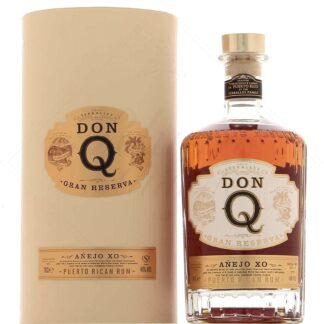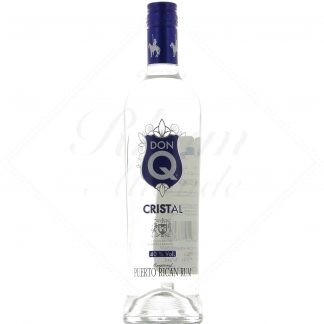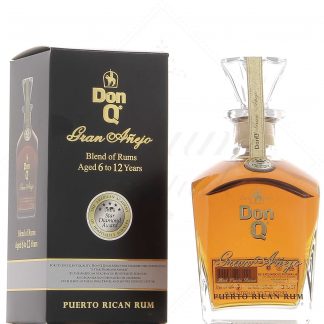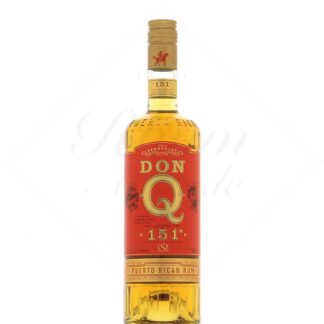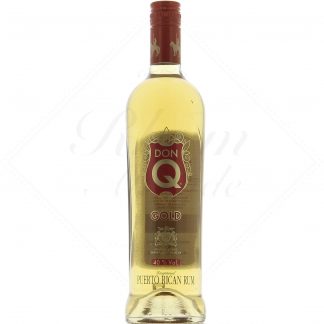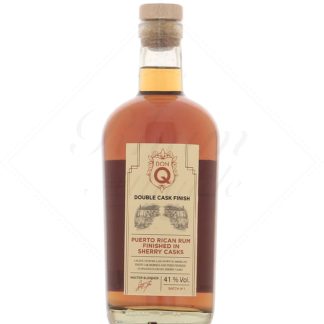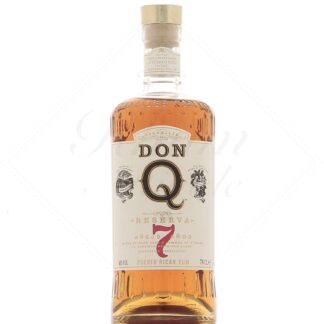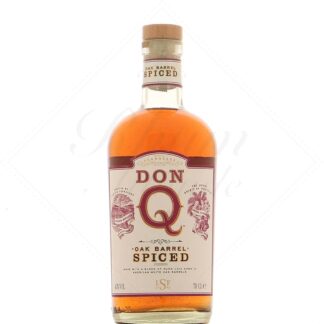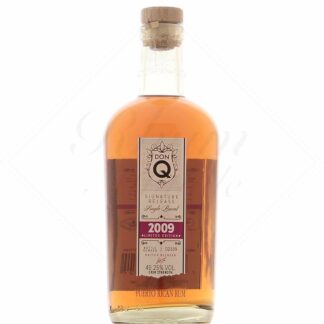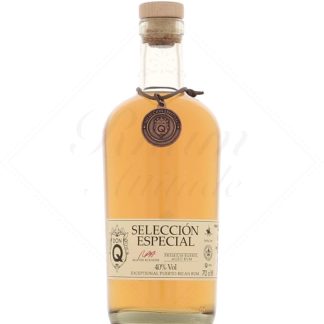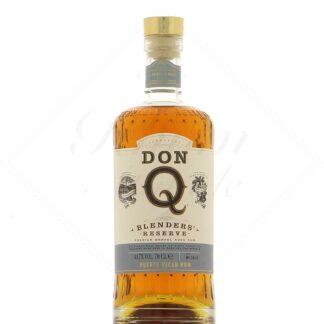Don Q

The history of Don Q rum
The story of Don Q rum began in 1820, when Sebastián Serrallés arrived in Puerto Rico from Catalonia. In Ponce, in the south of the island, then a Spanish colony, he set up a sugarcane plantation with a factory. His son, Don Juan Serrallés, added a distillery to the sugar plant in 1865, equipping it with a French-made still.
In 1890, distillation columns were introduced, and it was in Puerto Rico and Cuba that "ron ligero" was born and refined. This style of rum is made from a majority of rums distilled at very high proof, blended with rums that are heavier in aroma. By the end of the 19th century, most of the island's 200 or so distilleries were specializing in this style.
By the turn of the 1920s, Prohibition was in force, with Puerto Rico now part of the United States. However, the Serrallés distillery continued to produce rum, sold as "medicinal alcohol". 1933 marked the end of Prohibition, and the American thirst for rum knew no end. In 1934, the distillery acquired a modern 5-column installation. The same year saw the launch of the Don Q (for "Don Quixote") brand, which was immediately exported to North America.
Post-Prohibition madness
Over the following years, demand continued to grow. The Second World War did nothing to dampen this frenzy - quite the contrary. In the USA, whisky distilleries and cereals were requisitioned for the production of industrial alcohol. American demand for whisky had to be met, and production increased by a factor of 6 or 7.
On the other hand, this hastily made rum inevitably turns out to be of average quality, so when whisky returns after the war, Don Q suffers a severe setback. The Puerto Rican rum industry therefore decided to create a quality standard, still in force today, to restore its image.
Subsequently, as all over the world, sugar mills closed one after the other, and the Serrallés distillery was separated from the eponymous factory. The distillery began importing 70% of its molasses. In 2017, an attempt was made to replant cane, but Hurricane Maria decided otherwise.
The distillery produces other brands in addition to Don Q, including work for a certain Captain Morgan. This led to the addition of a second 5-column complex in 2007, and further investment in 2019 to increase capacity to 83 million liters of pure alcohol per year.
A distillery committed to reducing its impact on the environment
Such production capacity inevitably entails considerable environmental responsibility. Roberto Serrallés, engineer and member of the Board of Directors, took charge of this responsibility as soon as he arrived.
First of all, the distillery uses a lot of water, whether for fermentation, distillation or any other operation. Before releasing this water, the distillery uses bacteria to separate pollutants, producing gas which is then reused.
As far as energy is concerned, the gas recovered during water treatment provides 50% of requirements. Next come solar panels, followed by a small amount of oil.
In another example of a virtuous circular economy, the carbon dioxide recovered during fermentation is sold to the island's soft drink manufacturers, avoiding the need to import it at great expense.
Don Q rum production
Destilería Serrallés is still located in Ponce, where it was founded in the 19th century. To be labelled "rum from Puerto Rico", molasses rum must be column-distilled and aged in the country for a minimum of 1 year, in American oak casks.
To go into more detail, the molasses is diluted with water from the Río Inabón, a river that is entirely reserved for the distillery. This molasses is pasteurized beforehand, a rare occurrence in the world of rum, to ensure complete control over fermentation. Fermentation lasts 41 to 45 hours for light rums, and 7 to 10 days for heavy rums. All this takes place under temperature-controlled conditions, using cultured yeast that has been maintained since the 1950s.
The rums that come out of the quintuple column are just over 94% proof. The distillery that produces Don Q also uses a column from the old 1934 system. The aguardiente produced here is 75% proof. Here, the Cuban method is applied. Different bases are blended, themselves blends of aguardiente and light rums.
A huge winery
Don Q has a stock of over 100,000 barrels. The majority are American oak casks that have contained bourbon. Light rums are casked between 55% and 65%. Heavy rums are aged between 65 and 75%. The cellar master uses topping-up to limit the proportion of angels.
The winery is also home to over forty genuine 3-storey soleras, made up of oloroso sherry casks. 131 casks are stacked in this old facility, which probably dates back to the 1960s. The highly concentrated rums that come out of this solera are used for blending purposes only.
Finally, for some years now, the cellar has also been home to casks of all origins, used for finishing. Don Q has made a name for itself with its famous Vermouth finish.
Don Q rums
The Don Q range of rums is extensive and heterogeneous. This means it is suitable for all kinds of uses and consumers. For example, there's the very light Don Q Cristal, and the very powerful Don Q 151. Old rums are represented by numerous expressions, such as Don Q 7 ans, or Gran Reserva Añejo XO, the brand's flagship.
You can also find some very interesting single barrels, and even a barrel-aged spiced one.
A brand to discover and explore! Read less
